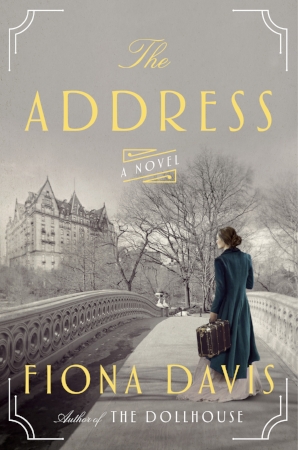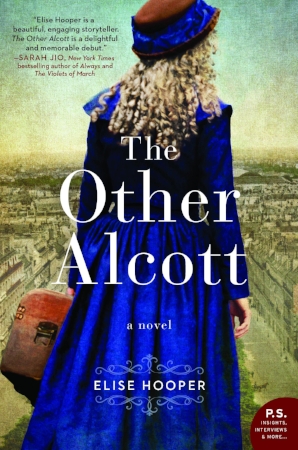WomensHistoryReads interview: Lauren Francis-Sharma
We're nearing the end of Women's History Month -- but not the #WomensHistoryReads Q&Q&Q&A project! The more I thought about authors inspired by women from history, I realized that I'd started out with too narrow a definition. Famous women are far from the only ones my fellow authors find inspiring. So I began reaching out to authors who draw inspiration from any women from history, not just the famous ones. Today's interviewee, Lauren Francis-Sharma, puts it so beautifully below: the women she celebrates in her writing "weren't forgotten as much as never seen." You'll love her insights and answers -- and you'll be dying to read her next book (I know I am!)
Lauren Francis-Sharma
Greer: Play matchmaker: what unsung woman from history would you most like to read a book about, and who should write it?
Lauren: What a question! So, I'm fascinated by this impending marriage between Meghan Markle and Prince Harry. Yes, because she is bi-racial but also because she's American. It's a standard American fairytale, of which I am often dismissive, but this idea of Harry spending time with Meghan's African-American mother and perhaps one day fathering little afro-wearing redheads both tickles me and frightens the hell out of me.
After the engagement was announced, there was some talk of Queen Charlotte, wife of George III, being the real first Black member of the British royal family. Queen Charlotte was considered very unfair, "ugly" is the word some of her contemporaries used and there seemed to be more talk than usual about this. I've traveled all over Europe and have been on those horribly long old palace visits and I have seen some "ugly" people in those paintings! And when I put a painting of Queen Charlotte next to say Anne of Austria or Marguerite de Valois of France, I don't see any of them more fair or more "ugly" than the other.
So, this has me convinced that perhaps some of those historians suggesting that she is a descendant of a Moor may be, in fact, correct. Because this is what Europeans were apt to do with a woman who had negroid features--call her ugly. What was her life like as talk swirled around her of her ugliness and her blackness? King George III was known as "Mad King George" so Queen Charlotte, while looked down upon by the court, was also dealing with this husband who by all accounts she loved very much and his declining mental health and the thirteen or so children they had together! Perhaps there's no story there, but if I could have Hilary Mantel's gift for researching, her dogged pursuit of historical data, added to my sensibilities as a Black woman and somehow meld both our approaches to storytelling, we might have one heck of a novel!
Greer: Yes! I would read that novel every day of the week and twice on Sundays. There's got to be a story in Charlotte's perspective. Next question: How would you describe what you write?
Lauren: I have this nagging itch to write women back into history. The New York Times recently began this series where they go back to look at all the obituaries of women who were overlooked by them. And I stress "overlooked by them" because I believe many of those women were and still are celebrated despite being ignored by the Times. With that said, this series reminded me of all the women of color in history who people don't even know to celebrate. Women who weren't forgotten as much as never seen. My grandmother was one of those women. She came to this country, fleeing an abusive husband, leaving her children behind in Trinidad, and within a year, making only $50/wk, managed to save enough to pay airfare for two of the six and then the year after for two more. This was remarkable for an uneducated woman from the rural countryside of Trinidad! And yet this story hadn't been told until I wrote about her in my first novel 'Til the Well Runs Dry. She didn't win any awards in her life, she scrubbed toilets in a New York hospital until she retired, and yet, she is my definition of resilience and fortitude. I write about ordinary women who find ways to joy and hope even while living under remarkably difficult circumstances.
Greer: Fantastic. What's your next book about and when will we see it?
Lauren: My next project, currently titled One True Place is set between colonial Trinidad and what was then known as the Louisiana Territory in North America. It spans nearly thirty-five years and tells the story of a proud and dignified family whose journey is upended by the arrival of both the English settlers and a gold-scavenging stranger. I love the idea that I've written my own kind of Western. I absolutely adore this book and I think my readers will too. It has all the elements I look for in a good book--community intrigue, a strong-willed woman at its core, it takes readers to a place they haven't been, there's love and betrayal, an unrelenting familial bond and of course, good history! Grove/Atlantic is publishing it and with any luck, they will have it in stores by Fall 2019.
Greer: Can't wait!
Lauren: Aah..question for Greer--When you're riddled with self-doubt and maybe you feel like your book didn't do as well as you'd hoped or the reviews weren't as good or maybe your agent and editor don't love a part of something you've written as much as you, to what or to whom do you turn?
Greer: First of all, I love that your question isn't "if" I'm riddled with self-doubt, but "when." Because aren't we all like that? When I'm writing a new book, I am completely convinced one day that it's genius, and the next day I'm equally convinced it's trash. So I definitely have those self-doubt moments, and those moments of "Why is this person getting a review in the Times and I'm not? Why is someone else's book I didn't personally love getting tons of attention? Why doesn't my agent think my book is ready to send out on submission yet when I am just so freaking tired of rewriting it?" Basically every stage of the process has infinite potential for self-doubt. Yay, publishing!
And it's honestly my fellow authors I turn to. Sometimes explicitly, to ask a question about how to go forward, to ask advice: "Have you ever been in this situation? What did you do?" And sometimes just reaching out to them, celebrating the good stuff when it happens -- theirs or mine! -- gives me the confidence and strength to move forward when the stuff is not so good. Some would call it a network, but I feel like that makes it sound a little mercenary, when it's not. It's a community. None of this would be worth doing if it weren't for that community.
For more about Lauren and her books, visit http://www.laurenfrancissharma.com.


















